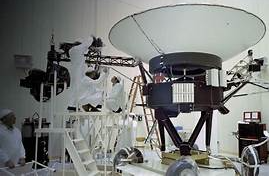Hurtling ever deeper into interstellar space, Voyager 2 has been out of touch ever since flight controllers accidentally sent a wrong command more than a week ago that tilted its antenna away from Earth
NASA is actively trying to re-establish communication with the Voyager 2 spacecraft, which has been out of contact for over a week due to a wrong command sent by flight controllers. The spacecraft, currently more than 12 billion miles from Earth and venturing into interstellar space, lost communication after its antenna was shifted just 2%. Despite the minor tilt, it was enough to interrupt its connection with Earth.
Voyager 2’s current position in space, more than 12 billion miles away, makes communication efforts more challenging. NASA’s Deep Space Network (DSN), particularly the large dish antenna located in Canberra, Australia, is the key facility tasked with trying to receive any faint signals from the spacecraft. The sheer distance between Voyager 2 and Earth means that signals take over 18 hours to reach their destination.
To resolve the situation, NASA is attempting to send a series of correct commands toward Voyager 2. In the next week, the Canberra antenna will send signals toward the spacecraft, hoping the instructions will reach the spacecraft and be successfully processed. This maneuver is critical in restoring communication with the craft and realigning its antenna to re-establish contact with Earth.
Although the odds of success are slim, NASA remains optimistic. The misalignment of the antenna is small, so there is a chance that the spacecraft could still receive and act on the corrected commands. NASA’s Jet Propulsion Laboratory (JPL), responsible for managing the Voyager missions, has expressed cautious hope that Voyager 2 will respond to the signal.
The spacecraft, launched in 1977, is a part of NASA’s Voyager program, designed to explore the outer planets of the solar system. Voyager 2, along with its twin, Voyager 1, has far exceeded its original mission objectives, with both spacecraft continuing to send valuable data from the farthest reaches of space. Even though communication challenges are common due to the vast distances involved, this is the first time in Voyager 2’s mission that a wrong command has caused a complete loss of contact.
Voyager 2’s mission is considered one of the most successful in the history of space exploration. The spacecraft has provided scientists with unprecedented data on the outer planets, such as Jupiter, Saturn, Uranus, and Neptune. As it travels beyond the influence of our sun, it is now engaged in sending information about interstellar space, which may unlock new mysteries about the universe. NASA’s efforts to reconnect with Voyager 2 are a testament to the ongoing importance of this historic mission.

